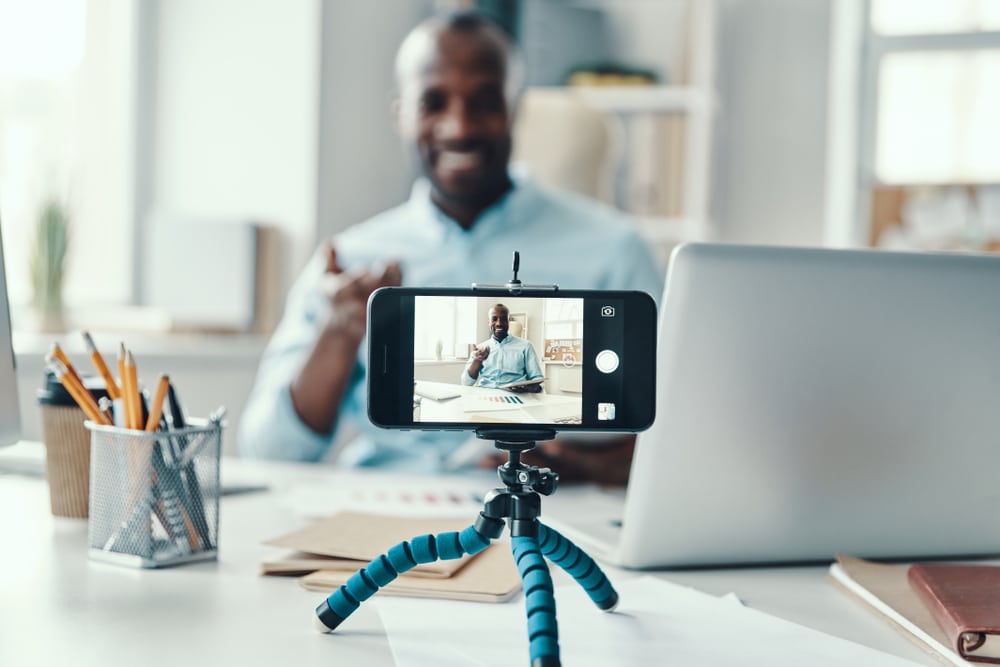Repurposing Video Content into Podcasts (and Vice Versa) for Maximum Reach
Explore effective strategies for repurposing video content into podcasts and vice versa to enhance your brand's reach. Discover tips for maximising engagement through cross-platform marketing, essential tools for editing and scheduling, and insights to refine your content strategy. Transform your existing media into engaging formats that capture diverse audiences and boost your online presence.
In today’s cluttered digital landscape, creating content that resonates across multiple platforms is the holy grail for businesses looking to raise awareness of what they do.
So what strategies can businesses employ to expand their reach? Repurposing video content into podcasts (and vice versa) is a brilliant way to get more out of your media and spread your message. By leveraging cross-platform marketing and a robust content strategy, you can effectively engage diverse audiences while saving time and resources. This means you are breathing new life into existing material, while broadening the accessibility and impact of your content.

Repurposing Video Content into Podcasts
One of the most significant benefits of repurposing video content into podcasts is the ability to expand your reach. While some people prefer watching videos on platforms like YouTube, others enjoy listening to content while commuting or multitasking. By converting your video into a podcast, you will ensure you offer audiences more ways to find your content.
This approach also saves time and resources, as it reuses content that you’ve already created. Social media and online platforms demand a constant stream of new material. If you neglect to post content regularly, people simply go elsewhere, so getting the most out of the content you have taken time and money to produce is crucial.
Put simply, the more ways you offer audiences to find and connect with your brand, the better. This ensures your content works harder for you across different channels. From YouTube to Spotify to Instagram, you can establish a consistent presence that regularly offers fresh content, keeping your audience engaged and coming back for more.
How to Repurpose Podcasts into Video Content
Repurposing podcasts into video content can be just as valuable.
Filming your podcast gives you the opportunity to create a lot of content from one source – video is much more suited to platforms like TikTok, Instagram and X. This might even allow you to create special episodes out of a podcast that you’ve already made, concentrating on a particular subject while the podcast itself may have covered several topics.
Obviously, the best way to do this is to simply record your podcast. Ideally, you’d have a camera on each person for a close-up, and then perhaps a camera for a wide shot that captures all the people involved. But this may not be practical or affordable. If you have just one camera, you can move around and try to capture people as they speak. Even just that locked-off wide shot may be enough if you don’t feel confident moving the camera around.
If you can’t film the podcast, there are other options available. You could create graphics like waveforms or whatever is relevant for your clips.
You can hopefully create a lot of clips out of this material. They could be anything – a short trailer, a funny or informative bit of conversation, anything at all that might make people want to explore the larger podcast and engage with your content. Social media is designed for short clips, not long enough to bore the audience, but short enough to amuse or intrigue. You should tailor your content to suit the platform you’re targeting. For example, a 30-second highlight reel is perfect for Instagram, while longer, in-depth discussions work better on YouTube.
Ensure your visuals align with your overall content strategy. Consistent branding—such as colours, fonts, and logos—helps establish recognition and trust.
Tools and Platforms for Cross-Platform Marketing
Effective cross-platform marketing hinges on using the right tools and platforms to streamline your efforts. When repurposing video content into podcasts (and vice versa), there are several tools available to make the process smoother and more efficient.
For editing, software like Adobe Premiere Pro and DaVinci, which is free, is easy to learn and allows you to refine video content before repurposing it into audio form. For podcasts, tools like Audacity, GarageBand, and Descript are excellent for editing audio tracks and removing background noise. Descript is particularly handy, as it offers transcription services that can also be used to create blog posts or subtitles.
When it comes to scheduling and publishing, platforms like Buffer, Hootsuite, and Later can help you manage your content across different channels. These tools allow you to schedule posts, track performance metrics, and ensure your repurposed content reaches the right audience at the right time.
Analytics tools such as Google Analytics, YouTube Studio, and Spotify for Podcasters provide valuable insights into how your content is performing. Monitoring these metrics will help you refine your content strategy and gain a deeper understanding of your audience’s preferences.
Finally, hosting platforms like Anchor, Libsyn, or Buzzsprout are essential for distributing your podcasts to various audio platforms like Spotify, Apple Podcasts, and Google Podcasts.
The key to success lies in understanding your audience’s preferences and tailoring your content to meet their needs. This cross-platform marketing approach is an invaluable way to grow your brand and maintain consistent engagement.
Want to talk more? Contact us today – [email protected]
Read all about it...
LATEST NEWS

10 Ways Professional Video Content Boosts Engagement Online

Video Content Production vs. Podcast Creation: Which Works Best for Your Brand?


